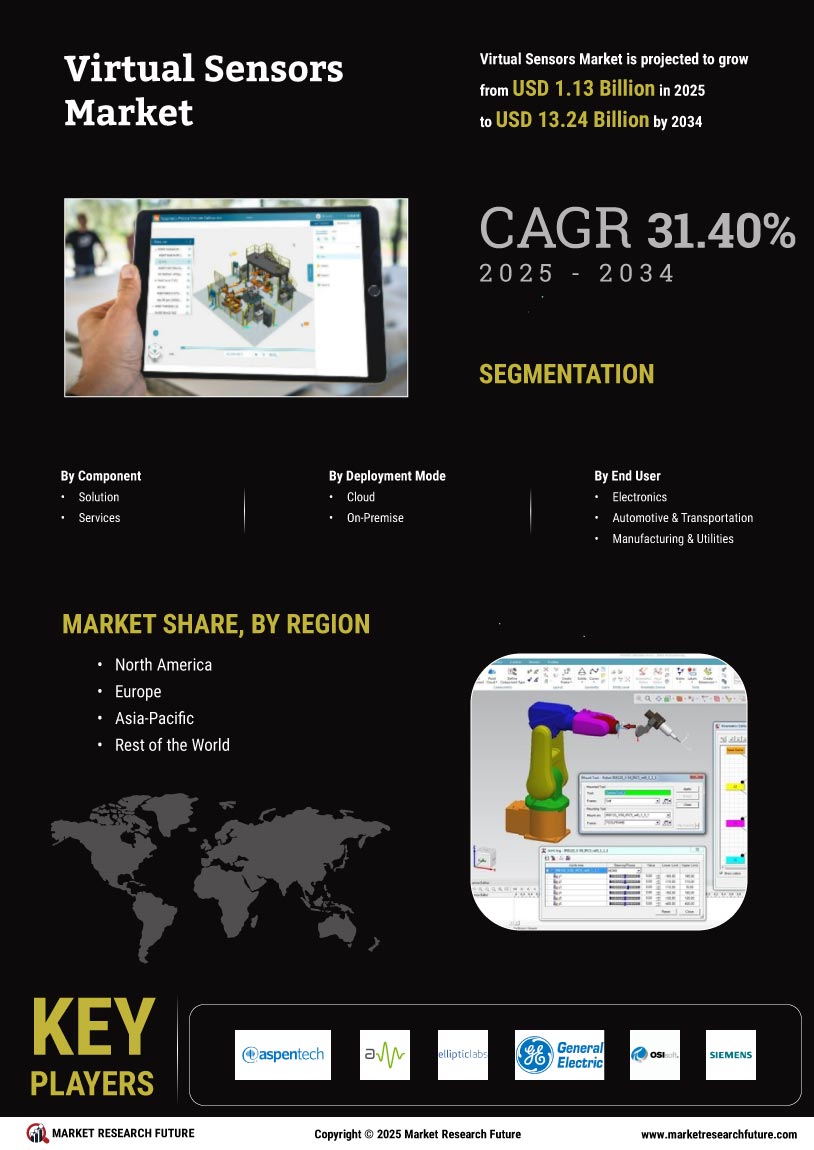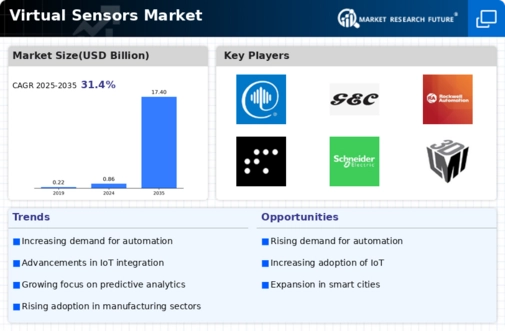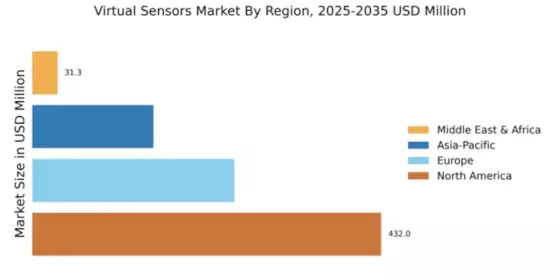Market Growth Projections
The Global Virtual Sensors Market Industry is poised for remarkable growth, with projections indicating an increase from 0.86 USD Billion in 2024 to 17.4 USD Billion by 2035. This trajectory suggests a compound annual growth rate of 31.45% from 2025 to 2035, reflecting the expanding applications and technological advancements in virtual sensor technology. The anticipated growth is driven by various factors, including the rising demand for smart devices, increased focus on energy efficiency, and advancements in artificial intelligence. As industries continue to adopt virtual sensors for enhanced monitoring and analytics, the market is likely to experience substantial expansion.
Growing Adoption in Healthcare
The healthcare sector increasingly leverages virtual sensors to improve patient monitoring and diagnostics, thereby propelling the Global Virtual Sensors Market Industry. Virtual sensors facilitate remote health monitoring, allowing healthcare providers to track vital signs and health metrics in real-time. This capability not only enhances patient care but also reduces the burden on healthcare facilities. As the demand for telehealth solutions rises, the integration of virtual sensors into medical devices is expected to expand. This trend may contribute to the market's growth trajectory, with projections indicating a substantial increase in value over the next decade.
Rising Demand for Smart Devices
The Global Virtual Sensors Market Industry experiences a notable surge in demand for smart devices, driven by advancements in technology and consumer preferences. As smart homes and IoT devices proliferate, the need for virtual sensors that can monitor and analyze data in real-time becomes increasingly critical. In 2024, the market is valued at 0.86 USD Billion, reflecting a growing acceptance of these technologies. The integration of virtual sensors into various applications, such as smart thermostats and security systems, enhances user experience and operational efficiency, indicating a robust trajectory for growth in the coming years.
Increased Focus on Energy Efficiency
Energy efficiency remains a pivotal driver within the Global Virtual Sensors Market Industry. Organizations across sectors are increasingly adopting virtual sensors to optimize energy consumption and reduce operational costs. For instance, virtual sensors can monitor energy usage patterns and provide actionable insights, enabling businesses to implement energy-saving measures. This trend aligns with global sustainability goals, as companies strive to minimize their carbon footprint. The anticipated growth from 0.86 USD Billion in 2024 to 17.4 USD Billion by 2035 underscores the potential impact of energy efficiency initiatives on market expansion.
Advancements in Artificial Intelligence
The integration of artificial intelligence into virtual sensor technology significantly enhances the capabilities of the Global Virtual Sensors Market Industry. AI algorithms can process vast amounts of data collected by virtual sensors, enabling predictive analytics and real-time decision-making. This advancement allows for improved accuracy in monitoring environmental conditions, health metrics, and industrial processes. As AI continues to evolve, its synergy with virtual sensors is likely to drive innovation and create new applications across various industries, fostering a competitive landscape that could lead to a compound annual growth rate of 31.45% from 2025 to 2035.
Emerging Applications in Automotive Industry
The automotive industry is witnessing a transformative shift with the incorporation of virtual sensors, which is a key driver for the Global Virtual Sensors Market Industry. These sensors play a crucial role in enhancing vehicle safety, navigation, and performance monitoring. For example, virtual sensors can provide real-time data on vehicle conditions, enabling predictive maintenance and improving overall efficiency. As the automotive sector increasingly embraces automation and smart technologies, the demand for virtual sensors is likely to escalate. This trend aligns with the broader market growth, suggesting a promising future for virtual sensor applications in transportation.


















Leave a Comment